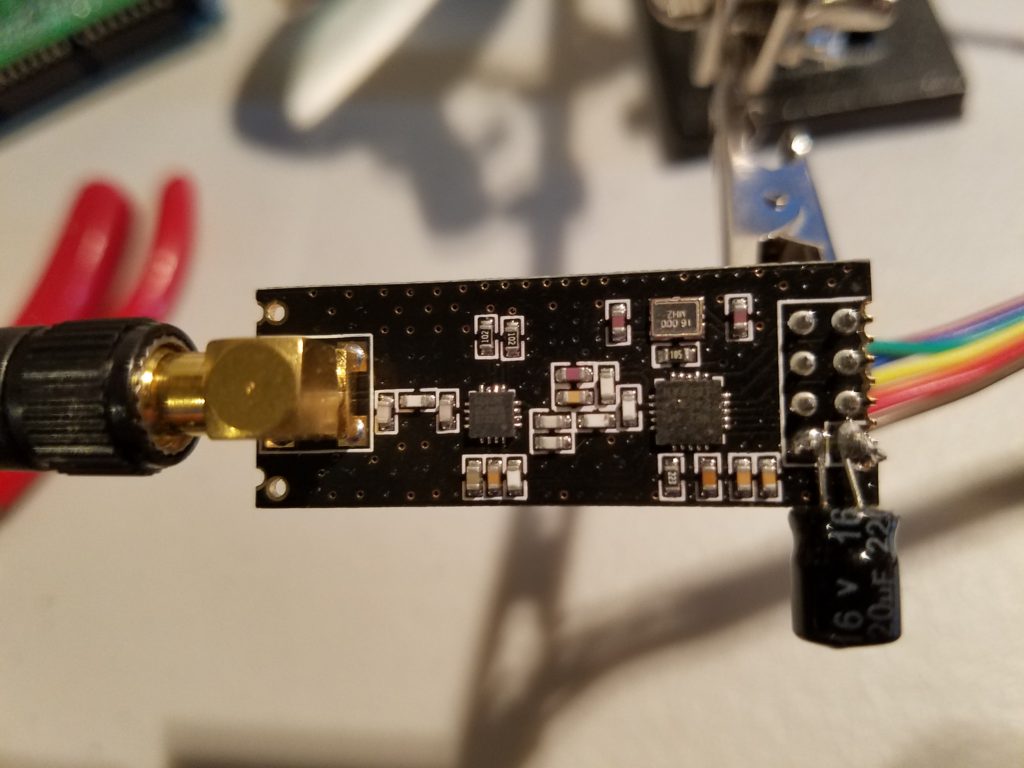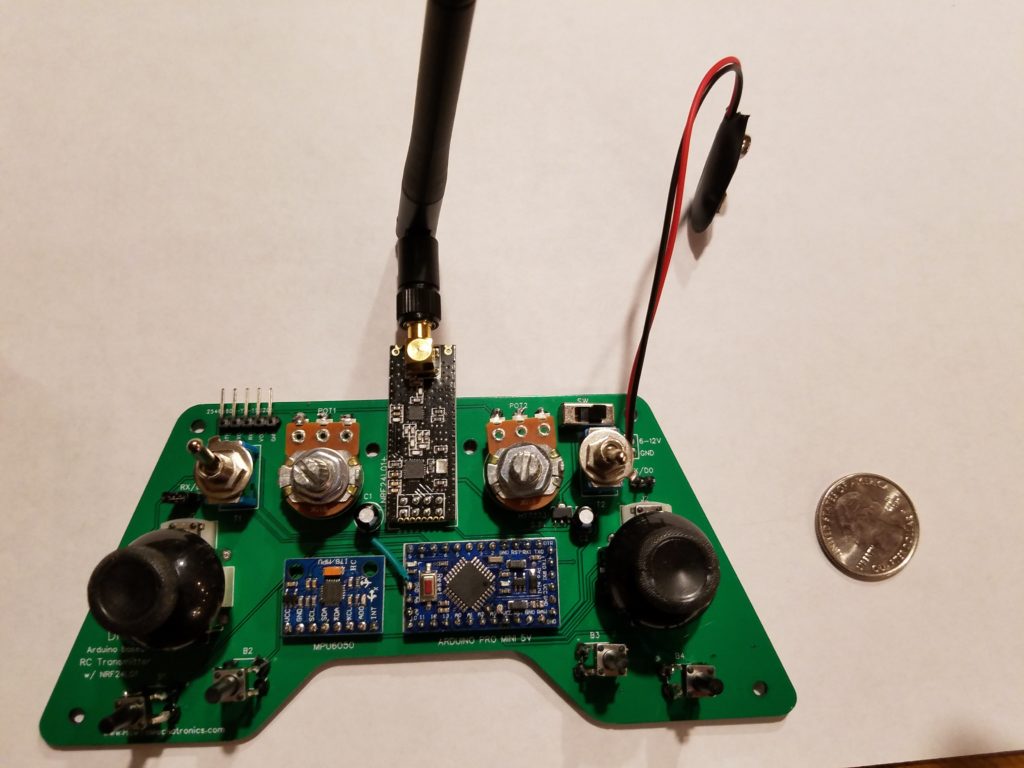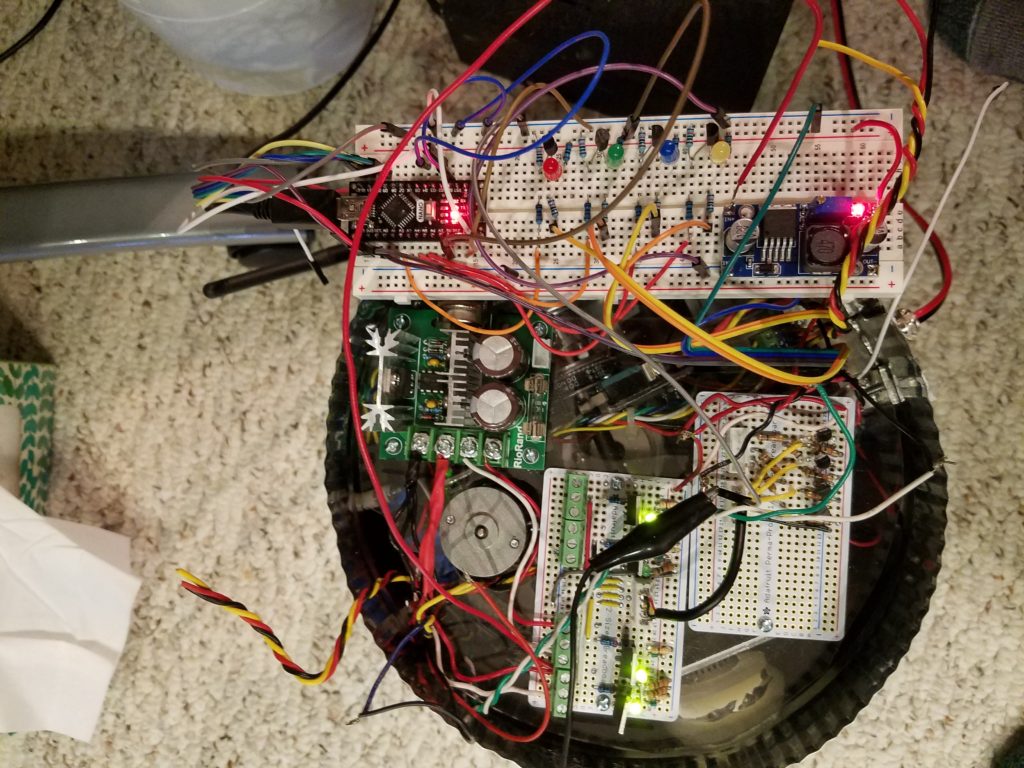SAT-TRAC – Part 5 Adding 2.4Ghz RC control to the KD0ZW SAT-TRAC
If it wasn’t ambitious enough to tackle a Satellite tracker, I thought it would be cool to be able to control it untethered with 2.4Ghz RC commands. Okay, where are all of these I/O ports going to come from? Using the Nanos’ digital ports, as well as every analog port, we were at a standstill with these ambitious requirements. Time to rethink this base to remote architecture. The answer was to replace the Nano with the MEGA2560. My I/O problems are over. Well after adding additional wiring, coding the port changes, it was time to add the Nrf24L01+LNA+PA transceiver. It has a range of up to 1000 meters. Yep, that should do it. However, it pulls some current at 3.3v so It will have its own power supply. Done deal. Coding installed, receiver breadboarded and tied into the control relays, its all systems go. Nut’n…. Goose egg…. Zero… It worked with the smaller Nrf24L01’s… What’s up? Well, back to the internet to see if I can get a clue. Okay, It was wired up correctly but a little remark here and there mentioned a cap across the terminals of the Nrf24L01+LNA+PA. That was the answer. Really… so I tried it. And it came to life.

Building a handheld RC transmitter controller from a how-to found at howtomechatronics.com , I built the controller and tested out the SAT-TRAC.

Most parts can be sourced from Amazon and Banggood.com
Here is the breadboard RC test unit mounted on the SAT-TRAC


